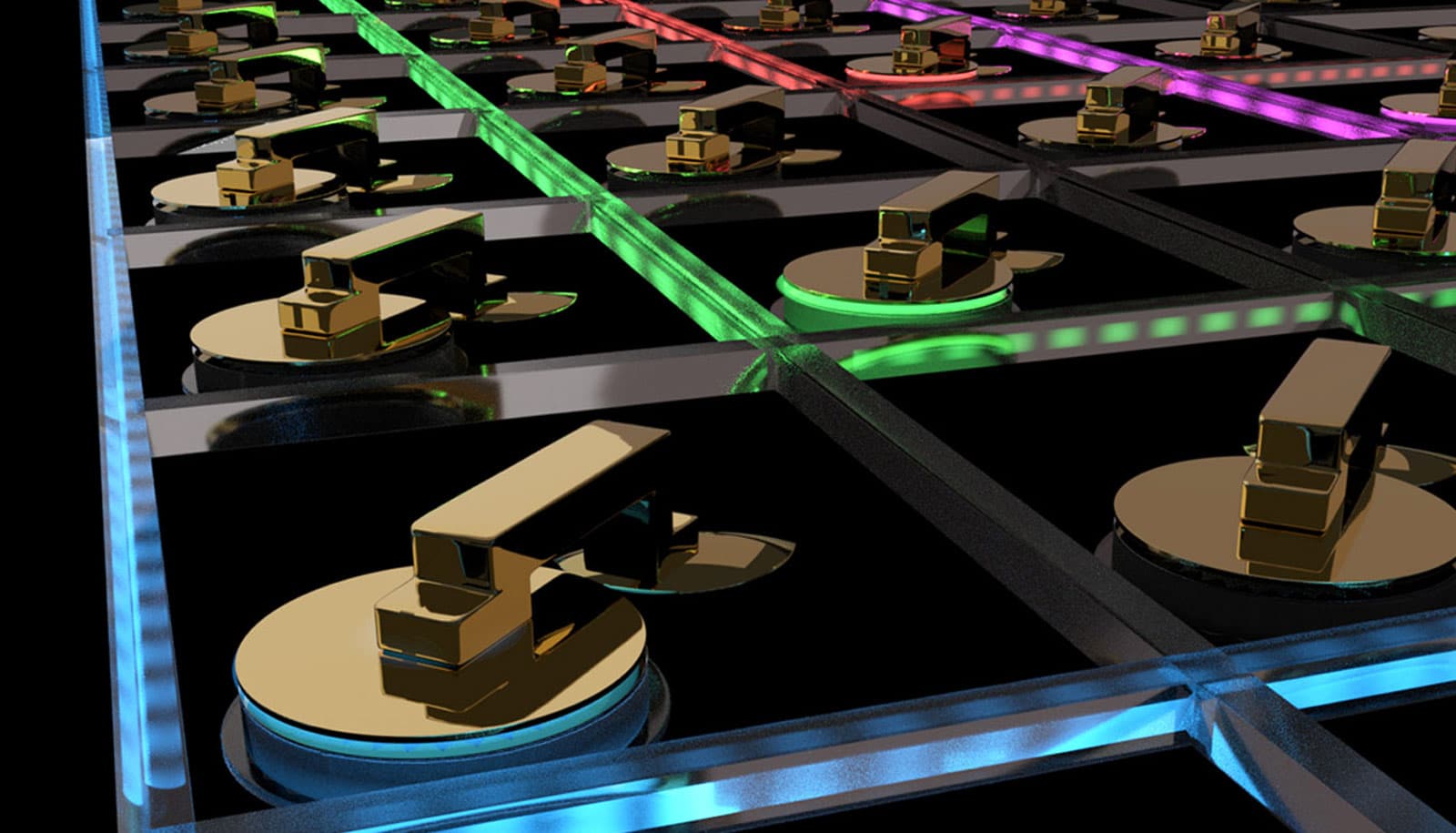A smaller, faster electro-opto-mechanical switch for light beams could find use in self-driving cars and optical quantum technologies.
The need of self-driving cars to assess their surroundings at lightning speed and to recognize people and obstacles takes current technologies to their limits.
The new switch might be able to elegantly solve both problems in the future.
The new work hinges on plasmonics. In this technology, light waves are squeezed into structures that are much smaller than the wavelength of the light—which, according to the laws of optics, should be impossible to do. It is possible, however, by guiding the light along the boundary between a metal and a dielectric—a substance, such as air or glass, that hardly conducts electric current.
The electromagnetic waves of the light partially penetrate the metal and cause the electrons inside it to oscillate, which results in a hybrid made of a light wave and an electronic excitation—the plasmon.
More than 10 years ago, some well-known physicists already predicted that optical switches based on plasmons could lead to a revolution in data transmission and data processing, as both can take place much faster with photons than with traditional electronics.
So far, however, real-life commercial applications have failed because of the large losses encountered when transporting photons through plasmonic devices, and because of the high switching voltages needed.
“We have now solved those problems by exploiting the good properties of plasmonics while minimizing the bad ones,” says postdoctoral researcher Christian Haffner, project leader and first author paper in the journal Science.
The central feature of the electro-opto-mechanical switch is a gold membrane—only 40 nanometers thick and a few micrometers wide—that an aluminum oxide disk separates from a silicon substrate.
In this configuration, mechanical forces can control the size of the gap between the gold membrane and the substrate. When a voltage is applied, the membrane bends slightly and, as a result, the gap becomes smaller.
The size of the gap, in turn, decides whether a light wave simply passes by the gold membrane or deflects around it. This is where the plasmons come in. In fact, for a certain width of the gap only plasmons of a particular wavelength can be excited on the gold membrane. If the light has a different wavelength, it doesn’t couple to the membrane but simply propagates in a straight line inside the silicon waveguide.
“Because we only use the plasmons for the short trip around the switching membrane, we have substantially lower losses than those of current electro-optic switches,” Haffner explains. “Also, we made the gold membrane very small and thin, so that we can switch it very fast and with a small voltage.”
The scientists have already demonstrated that their new switch can be flicked on and off several million times per second with an electric voltage of little more than one volt. This makes the bulky and power-hungry amplifiers typically used for electro-optical switches superfluous. In the future, the scientists plan to improve their switch further by making the gap between gold and silicon smaller still. This will make it possible to significantly reduce both the light losses and the switching voltage.
Possible applications for the new switch are plentiful. For instance, LIDAR systems (“Light Detection and Ranging”) for self-driving cars, in which the intensity and direction of propagation of light beams needs to be varied extremely quickly, could benefit from the fast and compact switches.
Moreover, such switches could accelerate the pattern recognition necessary for steering the cars. The switches could also be used in optical neural networks that mimic the human brain. There, they would be weighting elements with which the network “learns” to recognize certain objects—practically at the speed of light.
And, until now, classical optical switches have supported optical quantum circuits. Those switches are typically based on a variation in the refractive index of a material when it is heated, which changes the degree to which it bends light beams.
However, this is a slow process and, in the long run, incompatible with the low temperatures at which other quantum elements such as the quantum bits or “qubits” of a quantum computer typically work. A fast switch that practically doesn’t heat up at all could be useful there, too.
Source: ETH Zurich



